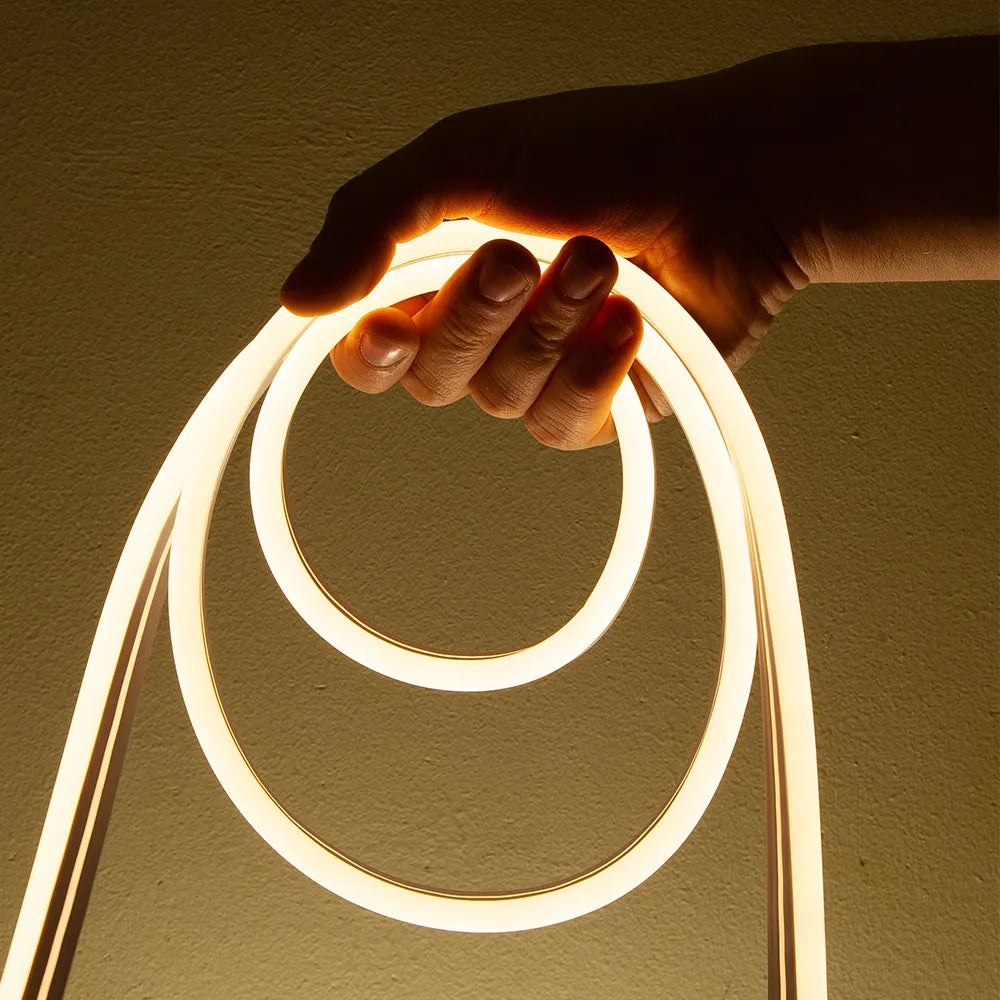Neon lights have long been a popular choice for signs, artwork and decorative lighting due to their bright and eye-catching glow. But what happens when the temperature drops? Can neon lights be in cold weather? Please follow this article to get the correct answer.
Structure of neon lights
Neon lights consist of one or more thin glass tubes that bend into different shapes. Inside the glass tube contains neon gas (Ne) and some additive gasses such as argon (Ar), xenon (Xe) or helium (He). The two ends of the glass tube are sealed and an electrode is attached to create an electric field.
When connected to a power source, current flowing through the neon lamp creates an electric field in the glass tube. This electric field excites the gas molecules in the tube, causing the electrons in the molecules to jump to higher energy regions. When electrons in gas molecules return to a lower energy state, the excess energy is emitted as light. In neon gas, this reaction produces reddish-orange light. Other gasses will produce different colors such as blue, green white or orange.
The color of neon light depends on the gas used. The electric field in the glass tube helps maintain the dispersion of electrons and creates a continuous light effect over the entire length of the tube.
Neon lights are a simple technology but create unique and colorful lighting effects. The combination of neon gas, electric field and photoluminescence creates beautiful and attention-grabbing colors.
Can neon signs be in cold weather?
Neon lights can be used in cold weather. Known for its ability to operate well at many temperatures. However, it should be noted that extremely cold weather can affect the performance of neon lights. When the temperature drops significantly, the gas inside the neon tube can become less active, which can result in a dimmer light or slower response time. Additionally, the glass tubes themselves can become more brittle in extremely cold temperatures, making them susceptible to damage or breakage.
Read more: Custom neon signs
How to protect neon signs in cold weather?
To solve these potential problems, you should use high-quality neon lights that are specifically designed to withstand cold weather conditions. These lights are constructed with durable materials and enhanced gas mixtures to ensure reliable performance even in freezing temperatures. Investing in high-quality neon lights will help minimize any negative effects of cold weather on their performance.
When installing neon lights in cold weather, it is important to ensure that all connections and brackets are secure and well insulated. This helps prevent any damage due to temperature fluctuations or extreme weather conditions. Regular maintenance, such as checking for cracks or leaks in neon tubes and cleaning out any accumulated debris, is also essential to keep lights operating optimally in cold weather.
Neon lights can withstand cold weather but they should not be exposed to extreme temperature changes. Rapid temperature fluctuations, such as bringing a neon sign from a freezing cold outdoors to a warm indoor environment, can cause thermal shock and potentially damage the light. Neon lights should be allowed to gradually adapt to temperature changes to avoid any adverse effects.

